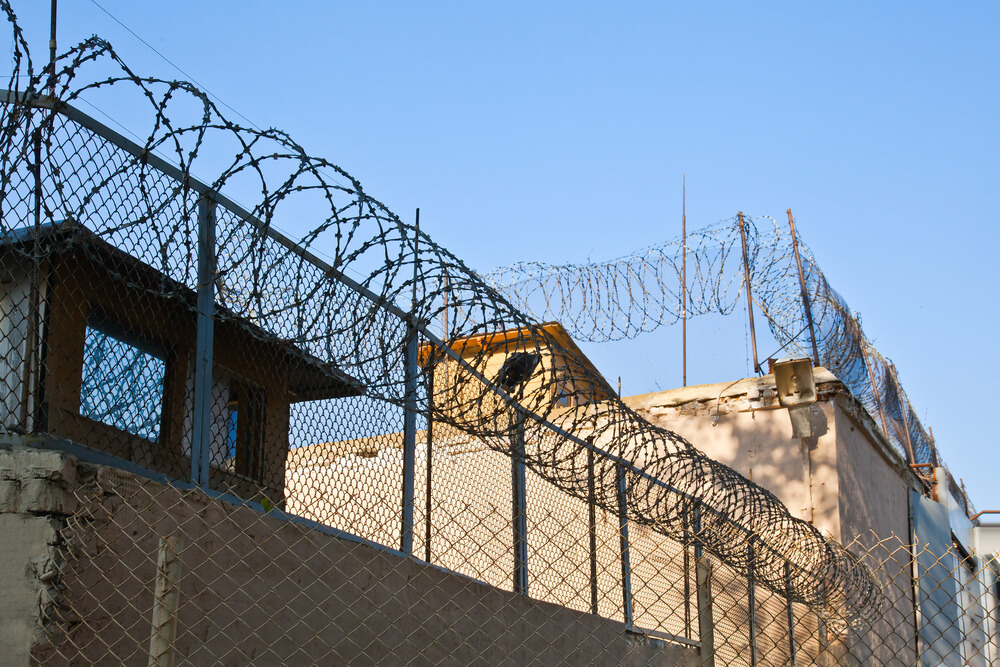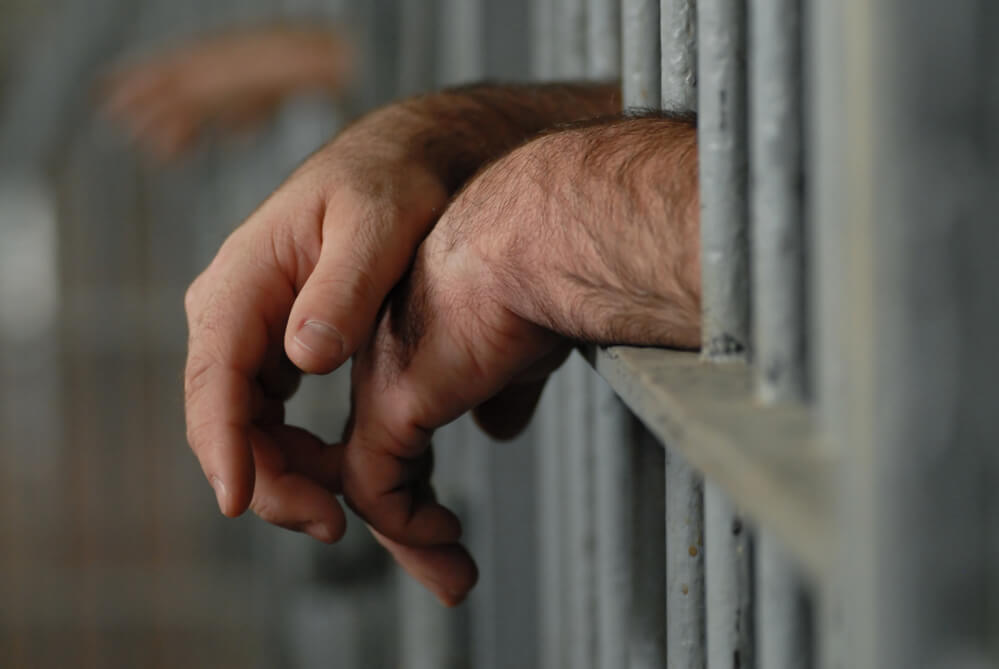Who and how much earns on the American prisons
Over two million people in the United States are prisoners. This is almost 25% of the total number of all prisoners on the planet. Of these, more than one hundred thousand Americans are held in commercial prisons. Such penitentiary institutions are either wholly owned by a private corporation, or formally controlled by the state, but are at the disposal of a commercial structure.

Фото: Depositphotos
Edition "My friend“Figured out how the prison business in the US works.
Private jails existed at the dawn of the American Republic. They contained debtors and citizens awaiting trial. However, at the end of the XVIII century, the state began to build prisons independently and fully assumed the function of the execution of punishments. The merchants only took contracts from the prison department: they provided medical services, supplied food, and transported prisoners.
In the 70 of the last century, the US government declared war on drugs. Drug freemen 60's faced a repressive state mechanism. The number of people convicted of crimes related to drug trafficking has sharply increased. At the same time, tough measures were taken against violent crimes and recidivism. In many respects, the minimum periods were increased, in some cases until life.
Pretty soon, the prisoners literally had nowhere to go, and it became necessary to build new prisons. At the same time, distrust of the government and discontent with high taxes grew in the society. Voters were reinforced in the opinion that an overgrown state is too expensive. On this wave of prison corporations arose. Creating private prisons seemed like a cost effective alternative to costly public ones. The idea was that the competition would force the owners of the prisons to spend money wiser.
In 1983, the American Correctional Corporation was established (Corrections Corporation of America - CCA), recently renamed to CoreCivic. Soon others entered the market, for example Wackenhut Corrections Corporationlater renamed GEO Group and Management & Training Corporation. Today it is the three largest prison corporations in the United States. They recognize that their well-being directly depends on the severity of laws. But at the same time they claim that they have no influence on the legislation. They consider the fall in crime rates to be a risk to their business, and illegal immigrants are called the “growth sector”.
Cost Optimization: Expectations and Reality
In 2015, the reporter of the publication Mother Jones Shane Bower for his material decided to find a job in one of the prison corporations. Commercial prisons are secretive and reluctant to let journalists inside, and Shane wanted to see with his own eyes what was happening there. His goal was a guard post in prison. He was not sure of the success of this enterprise, but the task was so easy that Shane became frightened. The opportunity to be in an extreme situation was more real than he had imagined. Completing the questionnaire and sending out a resume, Shane informed his potential name to potential employers and attached a resume that clearly indicated that he was a journalist. The frivolity of personnel officers surprised him. The details of his professional biography did not interest anyone. Within two weeks he received several invitations for an interview. As a result, out of several proposed vacancies, he chose a place in Louisiana - the state with the highest number of prisoners per capita.
Four months Shane worked as a security guard in prison, all this time recording what is happening on the recorder and a hidden camera. His penitentiary career ended when a photographer who worked with him, who was renting a prison outside, was arrested for illegally entering private territory. It was dangerous to continue the investigation. Louisiana had to hurry to leave. Then there were 14 months of working with sources and fact-checking, and at the exit - a report in the 5 parts and a documentary film based on it with fragments of interviews with former prisoners and security guards.
Investigation of Shane Bauer showed how cost and cost optimization is in fact the main asset of commercial prisons. Prison corporations prefer to hire non-union security guards. As a result, according to the 2015 year, the security guard’s initial rate in a commercial prison was about 9 dollars per hour, while in government prisons it was 12,5 dollars per hour.
In addition, commercial prisons save on the number of guards. As a result of this saving, the level of danger to the health of prisoners and guards increases. At trainings in the CCA Prison, Shane was instructed not to stop prisoners fighting, so as not to risk their lives. There is a case when in one of the prisons Management and Training Corporation in California, there was a clash between blacks and Hispanic prisoners. Mops, trimming pipes, home-made knives and even crutches were used. Prison guards retreated and summoned professionals from state prisons for help. The slaughter was stopped only after an hour and a half. As a result, two prisoners died and dozens were injured.

Фото: Depositphotos
Private prisons are trying to provide for themselves work
Adherents of private prisons argued that in the event of an increase in crime, businessmen could quickly respond to the demand that had arisen. When crime starts to decline, it will be easier for the government to refuse their services than to close state prisons. In actual fact, it turned out that the owners of prisons in every possible way achieve an increase in the number of prisoners and an increase in prison sentences.
For example, prison corporations are trying to influence people's choices. Before the election, they donate substantial sums of money to candidates. According to National Institute for Money in State PoliticsPrivate prisons most often transfer money to the campaigns of current legislators, believing that those who are more likely to be re-elected. That is, jailer merchants do not adhere to any ideology - they need access to decision-makers. In addition, they spend hundreds of thousands of dollars annually on lobbyist services, trying to influence criminal law.
The most useful tool for corporations are personal connections. The merger of large businesses and the state arises from the transfer of personnel from private companies to government agencies and back. Coming to a new service, a person maintains the worldview learned in previous work. Often, previously acquired relationships impose certain obligations on a person.
It is desirable for every business to have good relations with the state, and especially for prison corporations. Since private prisons are under strong state regulation, they seek to acquire profitable connections in the control structures. Thus, the transfer of former employees to public offices is beneficial to prison corporations.
Friedman vs Purear
In 2007, in Tennessee, activists prevented President Bush Jr. from appointing CCA attorney Gustav Purear to the position of federal district judge. By a miraculous coincidence, it is in this district that the headquarters of the SSA is located. It deals with most lawsuits against the corporation. That is, there was an obvious conflict of interest.
Purear worked as a senior attorney in the SSA since 2001, and was completely incompetent for the position of judge. Magazine Mother Jones wrote that since the beginning of his career, Purear had spent less time in the courtroom than the average convict. But he had good connections in the Republican Party. He participated in election campaigns and worked as a lawyer for several senators. However, before Purear could take office as a judge, he needed to pass a public hearing in the Senate Judicial Committee.
The campaign against Purear was organized by former prisoner Alex Friedman, who spent 6 years in SSA prisons. During his time in prison, he became a correspondent for a human rights journal. Prison Legal News. For articles that Friedman wrote about prison conditions, he was regularly subjected to repressive measures by the administration (frequent searches, disciplinary actions, transfer to a remote region). After his release, Friedman continued to work in Prison Legal News and by 2007, he became deputy editor-in-chief.
Friedman organized the “Residents of Tennessee vs. Purear” movement and attracted any caring fellow citizens to it. Women's organizations fought on Purear. They blamed him for being a member of a private golf club, where only white men were accepted. Government unions, traditionally opposed to private prisons, wrote protest letters. The National Guild of Advocates was indignant at Purear’s insignificant qualifications.
The decisive blow for Purear was the death of a prisoner in one of the prisons of the SSA. 34-year-old Estelle Richardson was beaten to death. Doctors recorded fractures of the skull bones and ribs and damage to internal organs. The prosecutor's office did not bring the case to court, citing the impossibility of establishing the exact time of death and the lack of evidence. Video recordings from surveillance cameras disappeared in a mysterious way. Those responsible for the death of Richardson were never established.
When the senators asked Purear about the case of Estelle Richardson, he said that it was an accident, and his ribs were broken during first aid. At the request of Friedman, the pathologist who inspected the body of Estel Richardson wrote a letter to the senators. He confirmed his conclusions about the violent death of Richardson and was surprised that Purear had distorted facts at a hearing in the Senate. As a result, the Senate decided to reject Purear's candidacy.

Фото: Depositphotos
Kids for money
It happens that attempts to mutually beneficial cooperation of corporations with the state take corruption forms. In 2009, there was a scandal throughout the country called “Kids for Money”, which ended in arrest and imprisonment for two judges in the state of Pennsylvania.
Two years earlier, Xnumx-year-old Hilary Trance created a caricature account on a social network. MySpace on behalf of the deputy director of the school. She painted a mocking portrait of the “beloved” teacher and placed it on the avatar. Invented farcical biography and grotesque inclinations. Soon the page was discovered by other students of the school and plentifully flavored with non-constructive criticism. When the deputy director read that schoolchildren write about her, she was horrified and wrote a complaint to the police.
The police assured Hillary's mother that if the girl pleaded guilty and refused the services of a lawyer, the sentence would be mild. Parents did not assume that the child is waiting for imprisonment. The meeting lasted only a few minutes, and Judge Mark Chiavarella sentenced Hillary to a prison term of 90 days. Hillary's mother, having recovered from the shock, began to look for legal assistance and, after calling to various authorities, went to the NGO Legal Center for Teenagers. (Juvenile Law Center).
The legal center conducted an investigation and found out that there were more than two and a half thousand such children who voluntarily refused a lawyer and received inadequately harsh sentences. And all of them were sentenced by Judge Chiavarella. The fates of many of them were crippled. The children who committed minor offenses turned out to be among real criminals and difficult teenagers. They suffered from the feeling of injustice of what happened to them. Many suffered from depression. At least one subsequently committed suicide. The center filed a petition with the Pennsylvania Supreme Court in order to annul unlawful sentences. However, the first attempt to do this failed - the Supreme Court refused the petition.
It soon became known that the FBI is investigating corruption in the judicial system of Pennsylvania. The figures of the investigation were including Mark Chiavarella and another judge - Michael Kanahan. The investigation revealed that the judges had colluded with the owners of the company Mid Atlantic Youth Services and construction company Mericle. Merchants built two prisons for minors, and the judges had to ensure their occupancy. For contracting and sending minors to prison Mid atlantic Judges Chiavarella and Kanahan received kickbacks, the total amount of which exceeded two and a half million dollars.
Numerous charges were filed against both judges, including extortion, bribery, and money laundering. Judge Chiavarella received 28 years, Judge Kanahan - 17,5. The owners of the corporation corporation and the company that built the prisons received each year of imprisonment. The Pennsylvania Supreme Court reexamined the adolescents legal center petition — and all sentences were canceled. Families affected by the actions of corrupt servants of Themis filed collective claims for compensation totaling more than twenty million dollars.
Big business vs non-profit organizations
In America, there is a powerful movement against private prisons. Various NGOs have published reports that private prisons are expensive, dangerous and useless in the fight against recidivism. Some say that the very concept of a private prison is flawed because it creates financial incentives for the growth of the prison population. Others recommend acting proactively: invest in education, health care and affordable housing programs. However, private prisons are phenomenally tenacious.
In August, the Department of Justice 2016 inspected private prisons and decided to refuse their services. The quotations of prison corporations on stock exchanges began to plummet. Prison personnel have announced future cuts. At the same time, the owners of prisons donated hundreds of thousands of dollars to Trump’s presidential campaign, which promised to toughen the fight against crime and illegal migration and argued that private prisons are better than state prisons. After Trump took office, new attorney general Jeff Sessions annulled the decision of the Justice Ministry to abandon private prisons.
In 2015, Sen. Burney Sanders submitted a draft law to ban US private prisons to Congress. The bill long wandered through different committees, but was never passed. Since July 2017, the new version of this bill has been discussed in the House of Representatives.
Read also on ForumDaily:
Published horrific violence statistics in US prisons
How to visit a prisoner in an American prison
An island of ill fame, between Manhattan and Queens
Subscribe to ForumDaily on Google NewsDo you want more important and interesting news about life in the USA and immigration to America? — support us donate! Also subscribe to our page Facebook. Select the “Priority in display” option and read us first. Also, don't forget to subscribe to our РєР ° РЅР ° Р »РІ Telegram and Instagram- there is a lot of interesting things there. And join thousands of readers ForumDaily New York — there you will find a lot of interesting and positive information about life in the metropolis.











